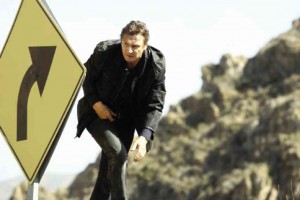In the ’70s, Charles Bronson made a name and niche for himself by specializing in playing placid family men who are forced to resort to violence when their loved ones are either kidnapped or killed.
In today’s movies, that signature role has been taken over by Liam Neeson, by way of his “Taken” film starrers.
In his latest film, “Taken 3,” Neeson portrays a retired agent who’s trying to live in obscurity and peace—but is forced to once again use his expertise and courage when his ex-wife is murdered.
At first, Neeson believes that she was killed by her new husband’s ruthless creditors, to make him pay up. For their part, police investigators think that Neeson’s character is guilty, and force him to escape from them, so he can continue with his investigation.
A complicating factor is Neeson’s young-adult daughter, whom he must protect, because he thinks that she’s next on the real killers’ list of “persuasive” targets.
Highlights
As the already thick plot further coagulates and complicates, Olivier Megaton’s well-crafted film excites viewers with its highly charged action highlights, which include such indelible images as a container van turning turtle during a particularly long and complicated car chase scene.
Megaton’s deft visual flourishes keep us involved for a time, but even his best efforts are soon unable to distract us from the emerging fact that this third edition in the film series has become too fussily complicated for its own good.
When the guilty parties are finally unmasked, they turn out to be even more hydra-headed than previously imagined.
That’s what happens when a previously small film about a family man’s vengeance becomes a hit, and spawns similarly profitable sequels: The original’s makers have to keep predictability from setting in, so more complex elements are stirred into the formula to keep it hot and exciting—until “more” becomes—much too much.
Even as his latest starrer gets too hot and complicated to logically handle, Neeson does his level best to make his character’s pain and motive clear and focused. As far as its lead performance goes, therefore, the film sustains its believability and impact.
Later, however, even Neeson’s best efforts are for naught, because his movie’s constantly “fantasticating” plotting eventually requires him to turn into an invincible one-man army, who is capable of penetrating a crime lord’s fortress all by his lonesome—and killing not 10, not 20, but 50 murderous and monstrous movie goons!
